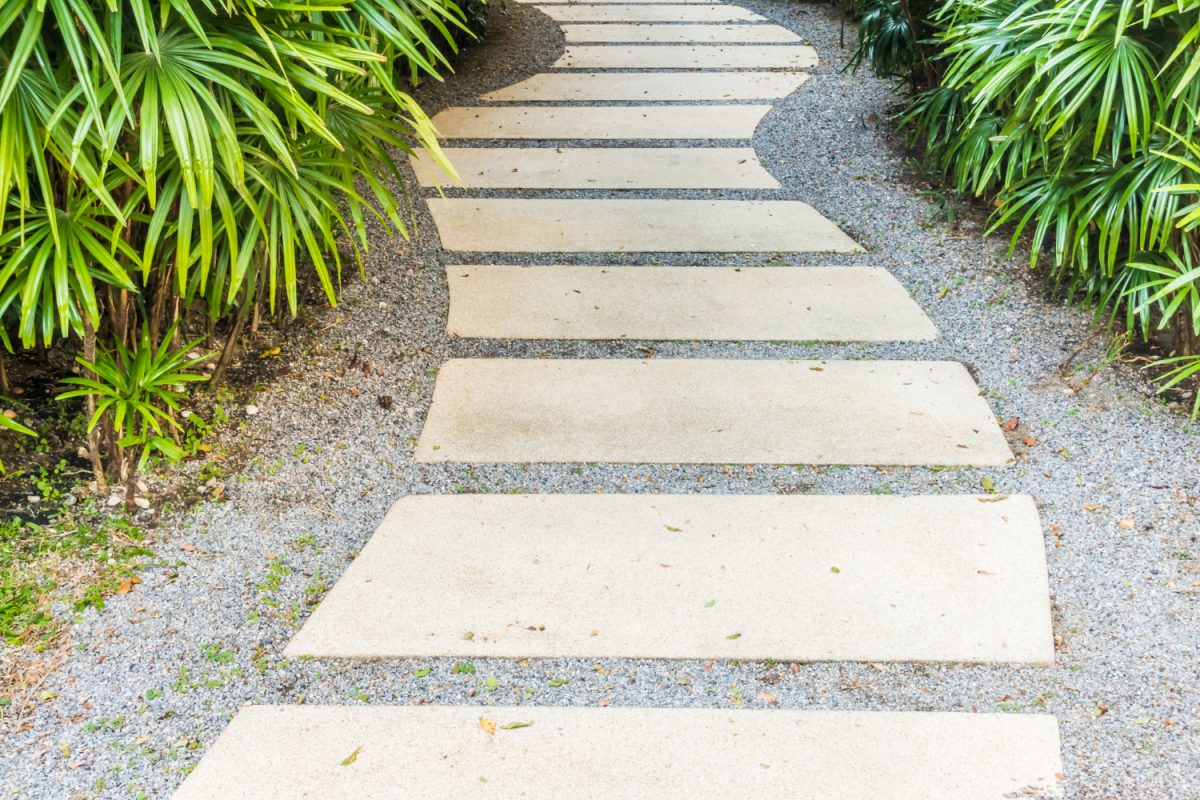
Garden paths are a part of small garden architecture. Why are they so important? What materials can be used to make a cheap garden path?
The design of the garden paths is very important. There can not be too few of them, because they will not serve their function. Keep in mind that the more paths, the less lawn space there is. Therefore, the layout of the paths must be planned very rationally and local conditions must be taken into account.
The number of paths should be adjusted to the size of the garden. It is assumed that if the garden is less than 10 a, then the paths can not be many and must be appropriately narrow. When designing garden paths, landscape architects assume that if the path will be used by two people, it must be 120-150 cm wide. If the path will be walked by one person, it should be half as wide, or 60 to 75 cm.
Paths allow you to safely walk around the garden without trampling the plants or trampling the grass. In addition to their practical functions, they are very aesthetic – they make your garden look nicer.
Gravel paths are very nice and cheap. Although their construction requires the use of curbing, they fit into any style of garden. Unfortunately, gravel paths like to sink, so before making such a path it is necessary to make a substructure of, for example, rubble.
A properly made path starts with digging the ground to a depth of about 25 cm. Then a layer of rubble or gravel should be poured into the excavation to the height of 10-15 cm, which should be compacted and geo-textile should be placed on it. Sand mixed with gravel should be poured on such prepared surface.
The garden path made of pebbles is cheap and looks very nice. The most irregular stones should be chosen for the paving. The pebble path should be laid on a foundation of, for example, rubble.
Stone paths are cheap and easy to make. If they are laid with great care, they will not need any maintenance or special treatment in the future. The garden path is best made of large, flat stones or stone slabs.
Large stones are perfect for forest and country gardens – they blend in perfectly with the natural surroundings. It is necessary to make a foundation for such a path because the stones like to sink.
A wooden garden path is cheap and quick to make, but you should remember to impregnate it regularly. If the wood is impregnated regularly, the path can last for many years.
A path made of slices of wood looks very interesting (you can buy them at a sawmill). The slices should be properly pressure-impregnated before laying.
The path made of garden bark is cheap and very impressive. The disadvantage of this solution is low durability. Bark paths should not be used in heavily trafficked areas because the bark spreads easily around the garden. It’ s worth using it on side paths in sunny places in the garden, because in the shade, the bark gets moldy.
Making a path from concrete slabs is cheap and fast and doesn’t require any additional skills. The slabs are of equal length, thanks to which they can be laid very quickly. One element costs less than 10 PLN each.
An interesting solution is a path made of grit, which is a specially broken material. It resembles pebbles but is much more stable when walking. When choosing grit for the garden you should take into account that if there are children at home, the stones will be scattered throughout the garden.
Photo source: Designed by Freepik